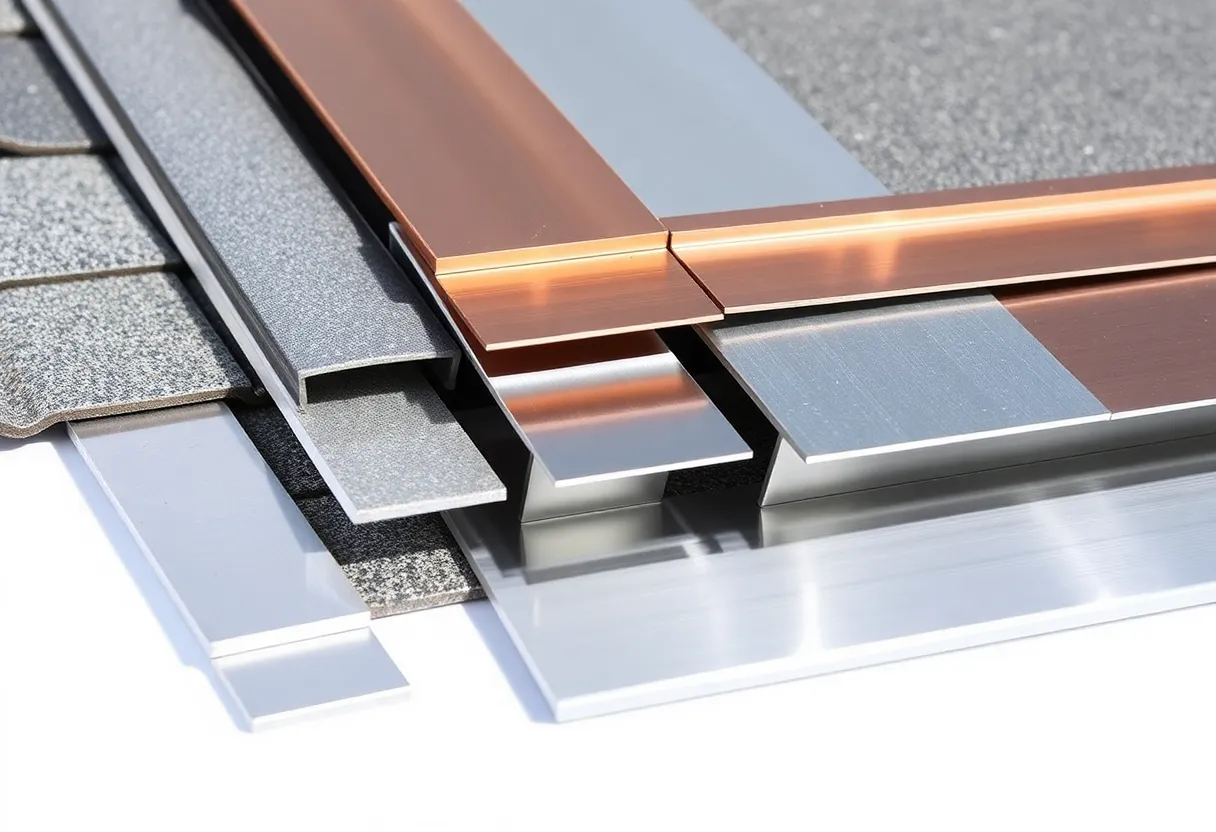

A comprehensive guide to choosing the right roof flashing materials.
Article Sponsored by:
Mays Contracting is more than just a roofing company; it’s a family legacy built on trust and quality. Founded in 1979, we’ve been serving the community for over four decades. Our story began with a simple vision: to provide exceptional roofing services for both residential and commercial properties. This vision has guided us ever since, as we’ve grown from a small, family-run operation to a trusted name in the industry.
Want to target the right audience? Sponsor our site and choose your specific industry to connect with a relevant audience.
Prominent brand mentions across targeted, industry-focused articles
High-visibility placements that speak directly to an engaged local audience
Guaranteed coverage that maximizes exposure and reinforces your brand presence
Interested in seeing what sponsored content looks like on our platform?
May’s Roofing & Contracting
Forwal Construction
NSC Clips
Real Internet Sales
Suited
Florida4Golf
Click the button below to sponsor our articles:
Sponsor Our ArticlesRoof flashing is a critical component in ensuring the longevity and functionality of a roof. As a barrier against water infiltration, it plays a vital role in protecting against leaks and damage. However, selecting the appropriate roof flashing requires careful consideration of various factors.
Roof flashing refers to thin pieces of impervious material, typically metal, installed in joints or valleys to direct water away from critical areas. It secures these points against water penetration, particularly where the roof meets chimneys, vents, and walls.
The material used for roof flashing significantly influences its performance, durability, and resistance. Below are some common materials for roof flashing:
Aluminum is lightweight and corrosion-resistant. It is often used in residential applications due to its affordability and ease of installation. However, it may not be suitable for areas prone to extreme weather.
Copper flashing offers excellent durability and longevity. Its natural patina provides an attractive finish as it ages. Though initially more expensive, it can be cost-effective over time due to its lifespan.
Galvanized steel is treated to resist rust, making it a popular choice for many roofing projects. It provides strong structural support but may be less resistant to corrosion compared to aluminum or copper.
Stainless steel offers superior corrosion resistance and strength. It is ideal for areas exposed to harsh elements. The higher cost is often justified by its durability and effectiveness.
The type of roofing system also influences the choice of flashing. Different roofs have unique profiles and pitches that affect water flow. Here are some considerations:
For sloped roofs, having appropriately placed flashing is vital for directing water away from roof penetrations. Flashing should be installed along ridge lines and valleys.
Flat roofs require a different approach, often utilizing membrane flashing materials to create a waterproof barrier.
Understanding the design and construction of the roofing system will guide you in selecting appropriately sized and shaped flashing.
Flashing material must be compatible with the roof covering. Using dissimilar metals can lead to galvanic corrosion. Here’s how to work with different roofing materials:
When working with asphalt shingles, install flashing made of aluminum or galvanized steel to prevent interactions that may lead to early degradation.
For tile roofing, copper flashing is recommended to complement the aesthetic and provide longevity. Care should also be taken to ensure compatibility with the tile material.
Slate roofs work best with copper or lead flashing solutions due to their durability and ability to withstand heavy elements.
Each region has building codes that dictate specific requirements for roof flashing materials and installation methods. Ensuring compliance is paramount—failure to do so may result in safety hazards and legal ramifications.
Consider environmental factors that can affect roof flashing efficiency:
Areas with high rainfall, snow, or diverse weather patterns require durable, weather-resistant flashing materials to prevent leaks and structural damage.
Flashing in areas exposed to high UV levels should be UV-resistant to maintain its integrity over time. Aluminum and galvanized steel are common choices for such environments.
The installation method is just as critical as the materials chosen. Proper installation enhances performance significantly. Here are several best practices:
Ensure the flashing overlaps at least 1-2 inches at the seams and is properly sealed with roofing cement to prevent water from seeping underneath.
The flashing should be sloped away from the roof penetrations to facilitate water flow instead of allowing it to pool.
Use continuous lengths of flashing wherever possible to reduce seams and potential leak points.
Regular maintenance extends the life of roof flashing and ensures that it continues to perform its function effectively. Here are maintenance tips:
Conduct inspections following extreme weather events to identify any damage, rust, or loose flashing.
Remove debris and leaves that may accumulate around flashing to prevent water from pooling and creating backups.
Re-seal flashing periodically to maintain a watertight connection, especially in older roofs where sealant wears over time.
Choosing the right roof flashing is critical for protecting your roofing investment. Consider the material, compatibility with your roofing system, local building codes, and environmental conditions. Proper installation and regular maintenance will enhance performance and longevity. Making informed choices on flashing materials contributes greatly to the overall effectiveness and durability of your roof.
Invest the time in selecting the right flashing to guard against leaks and other problems that can compromise the integrity of your roof.

Quality Roof Construction and Repair in Lexington, Richland, Newberry and Laurens Counties for over 40 Years.
News Summary On March 29, 2025, widespread protests broke out across the U.S. and parts…
News Summary A federal judge has reinstated grants for four fair housing organizations, including one…
News Summary As traditional media struggles to adapt, streaming services and social platforms are reshaping…
News Summary A tragic incident occurred in Saint Matthews, South Carolina, where Jordan Dove, a…
News Summary A tragic train collision in Columbia early Tuesday morning resulted in the death…
News Summary In Beaufort, South Carolina, 43 rhesus macaques escaped from the Alpha Genesis research…